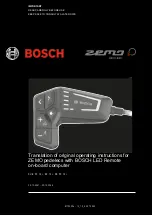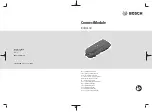
42
43
CoRRECTING THE FoRE-To-AFT PoSITIoN AND TILT oF THE
SADDLE
The inclination of your upper body
(a)
, and hence your riding comfort
and pedalling power, are also influenced by the distance between the
grips of the handlebars and the saddle. This distance can be altered
slightly by changing the position of the saddle rails in the seat post
clamp. However, this also influences your pedalling. Whether the saddle
is positioned more to the front or to the back of the bicycle will alter how
rearward the pedalling position of your legs is.
You need to have the saddle horizontal in order to pedal in a relaxed
manner. If it is tilted, you will constantly have to lean against the han-
dlebars to prevent yourself from slipping off the saddle.
G
The bolted connections of the seat post have to be tightened
to the prescribed torque values
(b)
. Use a torque wrench
and never exceed the maximum torque values! You can find
these in the chapter
“recommended torque Settings for
components”
, on the components themselves and/or in the
instructions from the parts manufacturers, which you can
find on the enclosed CD.
G
Make sure the saddle is clamped within the range of the
marking on the saddle rail
(c)
. otherwise the saddle rail can
fail!
A
The setting range of the saddle is very small. Replacing
the stem allows you to make far bigger adjustments to
the rider’s fore-to-aft position, as stems come in differ-
ent lengths
(d)
. In doing so you may achieve differences of
more than ten centimetres. In this case you usually would
have to adjust the length of the cables – a job best left to
your MUSTANG bicycle dealer!
I
The manufacturers of saddles deliver their products with
detailed instructions. Read them carefully before adjusting
the position of your saddle. If you are in doubt or if you have
any questions, then contact your MUSTANG bicycle dealer.
Adjusting Saddle Position and Tilt
Patent clamping with one bolt or two parallel bolts
(e)
With patent seat posts a single bolt fixes the clamping mechanism,
which controls both the tilt and the horizontal position of the saddle.
Some seat posts have two bolts side-by-side.
Release the bolt(s) at the top of the seat post. Release the bolt(s) two
to three turns anticlockwise at the most, otherwise the whole assembly
can come apart. Move the saddle forward or backward by sliding its
rails in the loosened seat post clamp. You may have to give the saddle
a light tap to move it. Please observe the markings on the saddle rail.
Make sure the seat of the saddle remains horizontal
(f)
as you retighten
the bolt(s). The MUSTANG bicycle should stand on level ground while
you adjust the saddle.
Having found your preferred position, make sure both clamp halves fit
snugly around the saddle rails before tightening the bolt(s) to the correct
torque as prescribed by the seat post manufacturer.
Retighten the bolt(s) with a torque wrench according to the instructions
of the manufacturer. After fastening the saddle, check whether it resists
tilting by bringing your weight to bear on it once with your hands at
either end of the saddle
(g)
.
G
The saddle clamping bolts are among the most delicate
bolts of the entire bicycle. Therefore, strictly observe the
recommended minimum and maximum torques. Do not
under- or overtighten. You can find these in the chapter
“recommended torque Settings for components”
, on the
components themselves and/or in the instructions from the
parts manufacturers, which you can find on the enclosed
CD. Always use a torque wrench.
G
Check the bolts by using a torque wrench
(h)
once a month
according to the values indicated in the enclosed operating
instructions or directly on the components.
G
Poorly tightened or loosening bolts can fail.
risk of acci-
dents
!
a
b
c
d
e
f
g
h
Содержание MTB/Cross
Страница 69: ......
















































